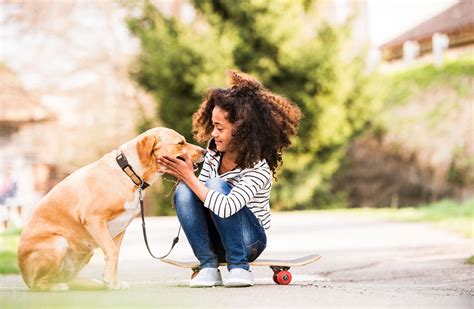Title: The Power of Socialization Training for Pets: Nurturing Well-Adjusted Companions
Introduction:
Welcoming a furry friend into our lives brings immense joy, but it also comes with a responsibility to ensure their emotional and behavioral well-being. Socialization training plays a pivotal role in molding our pets into confident and well-adjusted companions. This blog post aims to enlighten pet owners about the significance of socialization, exploring its basics, benefits, and strategies. We’ll delve into creating positive experiences through controlled interactions, exposing pets to varied environments and stimuli, and fostering healthy interactions with other animals. Moreover, we’ll tackle the challenges and fears associated with socialization, equipping pet owners with effective techniques that promote harmonious bonds and enriched lives for their beloved companions.
Importance of socialization training for pets
Socialization training is a crucial aspect of raising a well-rounded and balanced pet. It involves exposing them to various people, animals, environments, and experiences, with the aim of ensuring they can adapt and interact appropriately in different situations. cannot be emphasized enough, as it plays a significant role in the overall behavior and temperament of our furry friends.
First and foremost, socialization training helps pets develop necessary social skills. Just like humans, animals also have unique personalities, and early socialization allows them to learn how to communicate and interact effectively. It allows pets to understand proper social cues, body language, and appropriate play behavior. Through positive experiences and controlled interactions, pets can grow to become sociable and well-behaved companions.
Furthermore, early socialization has numerous benefits for pets. It helps them become confident, reducing the likelihood of fearful or aggressive behaviors later in life. When introduced to different environments and stimuli at a young age, pets learn to adapt and are less likely to develop anxiety or stress-related issues. They become more resilient and are capable of handling unfamiliar situations without feeling overwhelmed or scared.
Understanding the basics of socialization
Socialization is a crucial aspect of an animal’s development that plays a significant role in shaping their behavior and overall well-being. It involves exposing pets to various experiences, people, animals, and environments to help them develop the necessary skills to thrive in society.
One key aspect in understanding the basics of socialization is recognizing the critical window of opportunity. This window typically occurs during the first few weeks to months of an animal’s life, where they are more receptive and adaptable to new experiences. During this time, it is essential to introduce them to a wide range of positive stimuli to ensure they learn to respond appropriately.
List of reasons why socialization is important:
- Behavioral development: Socialization helps pets learn how to communicate and interact appropriately with humans and other animals. It teaches them vital skills such as proper play, how to approach and meet new animals, and how to respond to various situations.
- Reduced fear and anxiety: Exposing pets to different environments, sights, and sounds at an early age helps prevent the development of fear and anxiety-related behaviors. It allows them to become accustomed to different stimuli, helping them feel more confident and relaxed in various situations.
- Enhanced trainability: Socialized pets are often more receptive to training as they are accustomed to new experiences and interactions. They have learned to adapt and respond positively to different environments, making the training process smoother and more effective.
Understanding the basics of socialization also involves recognizing potential challenges and fears that pets may face. It is important to address these issues with patience and positive reinforcement. Gradual exposure to feared stimuli and controlled interactions can help overcome these challenges and build the pet’s confidence.
| Possible Challenges | Reactive Approach |
|---|---|
| Fear of other animals | Setting up controlled introductions with calm and well-socialized animals. |
| Anxiety in new environments | Gradually exposing the pet to new environments while providing reassurance and rewards for calm behavior. |
| Aggression towards strangers | Working with a professional trainer to manage and modify aggressive behaviors through positive reinforcement and behavior modification techniques. |
In conclusion, understanding the basics of socialization is crucial for anyone responsible for a pet’s well-being. It provides them with the necessary tools to navigate the world confidently, reduces the likelihood of behavioral issues, and promotes a positive and enriching life. By recognizing the importance of socialization and taking the time to create positive experiences, we can ensure our pets lead happy, well-adjusted lives.
Benefits of early socialization
The Benefits of Early Socialization
Early socialization is crucial for the overall well-being and development of our pets. It involves exposing them to various people, animals, and environments at a young age, helping them feel comfortable and confident in different situations. The benefits of early socialization are numerous and long-lasting, making it a vital aspect of pet ownership.
Firstly, early socialization helps prevent behavior problems in pets. By introducing them to different stimuli early on, they learn to adapt and respond appropriately to various situations. This can prevent fear, aggression, and anxiety-related behaviors that may arise later in life. A well-socialized pet is more likely to be calm, friendly, and well-behaved in different environments and around different people and animals.
Secondly, early socialization promotes positive experiences and helps pets build confidence and trust. Through controlled interactions with humans, other animals, and new environments, our pets learn that new experiences are not something to be feared but rather something enjoyable and exciting. This instills a sense of confidence and trust in them and helps them develop a positive outlook on life.
Furthermore, early socialization leads to a well-rounded and adaptable pet. When pets are exposed to a variety of people, animals, and environments early on, they learn to navigate different social situations with ease. This makes them more adaptable and comfortable in new situations as they grow older. It also helps prevent them from becoming overly fearful or defensive in unfamiliar situations, as they have learned to handle and respond to different stimuli.
- Improved behavior and reduced aggression
- Increased confidence and trust
- Greater adaptability and comfort in new situations
Socialization is not a one-time event but rather an ongoing process throughout a pet’s life. However, starting early and providing consistent socialization experiences in their formative years can greatly enhance the benefits described above. Early socialization is a proactive approach to raising a well-behaved, confident, and adaptable pet.
Creating positive experiences through controlled interactions
Creating positive experiences through controlled interactions is an essential aspect of socialization for pets. It involves carefully exposing them to various environments, stimuli, and experiences in a controlled manner. This approach allows pets to develop a positive association with new situations, people, and animals, which is crucial for their overall well-being.
One of the key benefits of controlled interactions is that it helps pets build confidence and reduce fear or anxiety. By introducing them gradually to different environments, such as parks, busy streets, or crowded places, pets learn to adapt and feel more at ease in unfamiliar surroundings. This process enables them to overcome any phobias or insecurities they may have had, ultimately leading to a happier and more well-adjusted pet.
Additionally, controlled interactions provide an opportunity for pets to learn proper social etiquette. By exposing them to different people and animals, they can develop important social skills, such as appropriate greetings, understanding body language, and respecting personal space. This can be particularly helpful for dogs who may tend to be overly excited or reactive in social situations.
- Positive association: Controlled interactions help pets develop a positive association with new experiences and environments.
- Confidence building: Gradual exposure to different environments reduces fear and anxiety, building the pet’s confidence.
- Social skills development: By interacting with various people and animals, pets can learn proper social etiquette and behaviors.
Table: Exposing Pets to Controlled Interactions
| Step | Description |
|---|---|
| 1 | Start with controlled introductions to friendly and calm individuals or animals. |
| 2 | Gradually increase exposure to different environments, taking into consideration the pet’s comfort level. |
| 3 | Use positive reinforcement, rewards, and treats to create positive associations with each interaction. |
| 4 | Monitor the pet’s behavior and body language, making adjustments as necessary to ensure their comfort and safety. |
Overall, controlled interactions play a vital role in a pet’s socialization process. They allow pets to become well-rounded individuals with the ability to adapt to various situations and interact positively with others. By creating positive experiences through controlled interactions, pet owners can help their furry companions live a happier and more fulfilling life.
Introducing your pet to different environments and stimuli
Introducing your pet to different environments and stimuli is an essential part of their socialization and overall development. Exposing your pet to various situations from an early age helps them become more adaptable, confident, and well-adjusted. Whether you have a dog, cat, or any other pet, introducing them to different environments and stimuli is crucial for their mental and emotional growth.
One of the key benefits of introducing your pet to different environments is that it helps them become more comfortable and less anxious in new situations. By gradually exposing them to new places, such as parks, crowded streets, or even other people’s homes, you can help them overcome any fears or uncertainties they may have. This exposure also prevents the development of phobias or anxiety-related behaviors later in life.
Additionally, introducing your pet to various stimuli, such as different sounds, smells, and textures, allows them to broaden their sensory experiences. This can enrich their lives and help them better understand and navigate the world around them. For example, taking your dog on walks in different environments exposes them to new smells, noises, and people, which can enhance their social skills and overall confidence. Similarly, providing your cat with different toys, scratching surfaces, and hiding spots can stimulate their senses and prevent boredom.
- Improved social skills
- Reduced anxiety and fear
- Enhanced adaptability and confidence
- Prevention of phobias and anxiety-related behaviors
- Increased mental and emotional stimulation
- Prevention of boredom and destructive behaviors
It’s important to introduce your pet to different environments and stimuli gradually and in a controlled manner. Start with familiar and less overwhelming places and gradually progress to more challenging ones. Always monitor your pet’s reactions and provide positive reinforcement for calm and appropriate behavior. Remember to use positive reinforcement techniques, such as treats and praise, to reward your pet for their bravery and positive responses to new environments and stimuli.
| Types of Environments | Types of Stimuli |
|---|---|
| Parks | New smells |
| Crowded streets | Different sounds |
| Beaches | Unfamiliar textures |
| Hiking trails | Other animals |
By systematically exposing your pet to different environments and stimuli, you are setting them up for a lifetime of positive experiences and interactions. This not only benefits their overall socialization but also creates a strong bond between you and your furry companion. So, start exploring new places and providing diverse stimuli for your pet, and watch them thrive in the ever-expanding world around them!
Socializing with other animals: dogs, cats, and more
When it comes to socializing our pets, it’s not just about human interaction. It’s also important for them to have positive experiences with other animals, such as dogs, cats, and more. Socializing with other animals can help your pet develop important skills, build confidence, and create lasting friendships. In this blog post, we will explore the benefits of socializing your pet with different animals and provide tips on how to make these interactions successful.
The benefits of socializing with other animals
There are numerous benefits to socializing your pet with other animals. One of the main advantages is that it helps them develop proper social etiquette. By interacting with different animals, your pet will learn how to communicate effectively, read body language, and understand social cues. This is particularly important for dogs, as they are pack animals by nature. Socialization with other animals can also help prevent behavioral issues, such as aggression or fear, by teaching your pet how to behave appropriately in various situations.
Additionally, socializing with different animals can help your pet build confidence and reduce anxiety. By exposing your pet to new environments and stimuli, they will become more comfortable and adaptable. This can be especially beneficial for cats, which are often stereotyped as solitary creatures. By introducing them to other animals, you can help them overcome their natural instincts and foster a positive and enriching environment for them.
Tips for successful interactions
When introducing your pet to other animals, it’s important to take it slow and ensure controlled interactions. Start with animals that are known to be friendly and well-socialized. Ensure that both animals are properly restrained, either on a leash or in a secure space, to avoid any potential conflicts or accidents. Keep the initial interactions short and positive, gradually increasing the duration and intensity as both animals become more comfortable with each other.
It’s also important to monitor the body language and behavior of both animals during the interactions. Look for signs of stress, fear, or aggression, such as growling, hissing, or raised fur. If any of these behaviors are displayed, it’s crucial to separate the animals immediately and seek professional guidance if needed. Remember, not all animals will get along, and it’s important to prioritize the safety and well-being of both your pet and the other animal.
In conclusion
Socializing with other animals, whether they are dogs, cats, or other species, is an essential part of your pet’s overall socialization training. It helps them develop important skills, build confidence, and create positive experiences. By following the tips provided and ensuring controlled interactions, you can create a harmonious environment where your pet can flourish and enjoy the company of various animals. So, let’s embrace the opportunity to introduce our furry friends to new companions and watch them thrive!
Teaching your pet proper social etiquette
Teaching your pet proper social etiquette is an essential part of their training and development. Just like humans, pets need to learn how to behave appropriately in social situations to ensure a peaceful and harmonious coexistence with their owners and other animals. By teaching your pet proper social etiquette, you are not only helping them to be well-mannered and polite but also taking an active role in preventing any potential behavioral issues that may arise from their lack of social skills.
One of the key aspects of teaching your pet proper social etiquette is to set clear boundaries and rules. This can be achieved through consistent training and reinforcement of desired behaviors. For example, if your pet jumps on people when they greet them, it is important to teach them that this behavior is not acceptable. You can do this by using positive reinforcement techniques such as giving them treats or praise when they greet people calmly and politely.
In addition to setting boundaries, it is also crucial to expose your pet to a variety of social situations. This includes introducing them to different environments, stimuli, and other animals. By exposing your pet to various social experiences, you are helping them to become more confident and adaptable in different settings. It is important to start this process at an early age to ensure that your pet becomes well-socialized and comfortable in various situations.
- Benefits of teaching your pet proper social etiquette:
- Improved behavior: By teaching your pet proper social etiquette, you are helping them to develop good manners and behavior. This can result in a well-behaved pet who is respectful of others.
- Prevention of behavioral issues: Lack of socialization and improper social etiquette can lead to various behavioral issues in pets. By teaching them the appropriate way to interact with others, you can prevent these issues from arising.
- Enhanced social skills: Proper social etiquette allows your pet to interact effectively with other animals and humans. This can help them build positive relationships and improve their overall social skills.
- Reduced stress and anxiety: Pets who are well-socialized and familiar with different social situations are less likely to experience stress and anxiety. Teaching them proper social etiquette can help them feel more comfortable and relaxed in various environments.
| Common challenges in teaching social etiquette | How to overcome them |
|---|---|
| Resistance to training | Use positive reinforcement techniques such as treats and praise to motivate and reward your pet for displaying appropriate social behavior. |
| Fear or aggression towards other animals | Gradually introduce your pet to other animals in a controlled and supervised manner. Seek professional help if necessary to address any underlying fear or aggression issues. |
| Overexcitement and jumping on people | Teach your pet alternative behaviors such as sitting or staying calm when greeting people. Consistently reinforce these behaviors and discourage jumping through positive reinforcement. |
In conclusion, teaching your pet proper social etiquette is crucial for their overall well-being and behavior. By setting clear boundaries, exposing them to various social situations, and using positive reinforcement techniques, you can help your pet become a well-mannered and socially adept companion. Remember to be patient, consistent, and seek professional help if needed. With proper training and socialization, your pet can thrive in various social environments and enjoy positive interactions with other animals and humans.
Dealing with socialization challenges and fears
Socializing your pet is an important aspect of their development. It helps them learn how to interact with other animals and people, making them well-rounded and friendly. However, some pets may face challenges and fears when it comes to socialization. Whether it’s due to a traumatic experience or a natural temperament, these challenges can make the socialization process difficult. In this blog post, we will discuss some common challenges and fears that pets may have and how to effectively deal with them.
1. Fear of new environments: Some pets may be hesitant to explore new environments. This can be due to a lack of exposure or a negative experience in the past. To help your pet overcome this fear, start by introducing them to new environments gradually. Allow them to explore at their own pace and provide positive reinforcement for any brave behavior. With time and patience, they will start feeling more comfortable in new surroundings.
2. Aggression towards other animals: It’s common for pets to display aggression towards other animals, especially when they are not properly socialized. If your pet shows aggression, it’s essential to address the issue promptly. Consult with a professional trainer or behaviorist who can guide you through the process of desensitization and counter-conditioning. With proper training and controlled interactions, your pet can learn to be more accepting and friendly towards other animals.
3. Anxiety around new people: Some pets may feel anxious or fearful when meeting new people. This can be challenging, especially if you have guests or family members visiting frequently. To help your pet overcome this fear, gradually introduce them to new people in a controlled environment. Always allow your pet to approach new individuals at their own pace and reward them for calm behavior. Over time, they will learn that meeting new people can be a positive and rewarding experience.
| Common Challenges: | Effective Solutions: |
|---|---|
| Fear of new environments | Gradual exposure and positive reinforcement |
| Aggression towards other animals | Consultation with professional trainers/behaviorists |
| Anxiety around new people | Controlled introductions and positive reinforcement |
Dealing with socialization challenges and fears can be a process that requires time, patience, and consistency. It’s important to understand that every pet is unique, and their challenges may vary. If you find that your pet’s fears and challenges are overwhelming or difficult to manage on your own, don’t hesitate to seek professional help. With the right guidance and approach, you can help your pet overcome these obstacles and lead a happy, social life.
Frequently Asked Questions
1. Why is socialization training important for pets?
Socialization training is important for pets because it helps them develop good behavior, build confidence, and ensure they can interact well with humans and other animals.
2. What are the basics of socialization?
The basics of socialization involve exposing your pet to different people, animals, environments, and stimuli in a controlled and positive way, allowing them to gradually become more comfortable and confident in various situations.
3. What are the benefits of early socialization?
Early socialization is crucial as it helps prevent behavioral problems in the future, promotes proper development, increases the chances of successful adoptions, and enables pets to adapt well to new experiences throughout their lives.
4. How can I create positive experiences through controlled interactions?
You can create positive experiences through controlled interactions by gradually exposing your pet to new people, animals, and environments, using rewards and positive reinforcement, and ensuring that the experiences are stress-free and enjoyable for your pet.
5. How can I introduce my pet to different environments and stimuli?
You can introduce your pet to different environments and stimuli by gradually exposing them to new places, sounds, smells, and objects, allowing them to become accustomed to new experiences at their own pace while providing comfort and reassurance.
6. How can I socialize my pet with other animals like dogs, cats, and more?
To socialize your pet with other animals, start with controlled and supervised introductions in a neutral space, use positive reinforcement when they interact well, and gradually increase the duration and complexity of their interactions while monitoring their reactions and body language.
7. How can I teach my pet proper social etiquette?
You can teach your pet proper social etiquette by setting clear boundaries and rules, providing consistent training and reinforcement, and exposing them to different social situations where they can learn to be polite, respectful, and well-behaved around humans and other animals.





